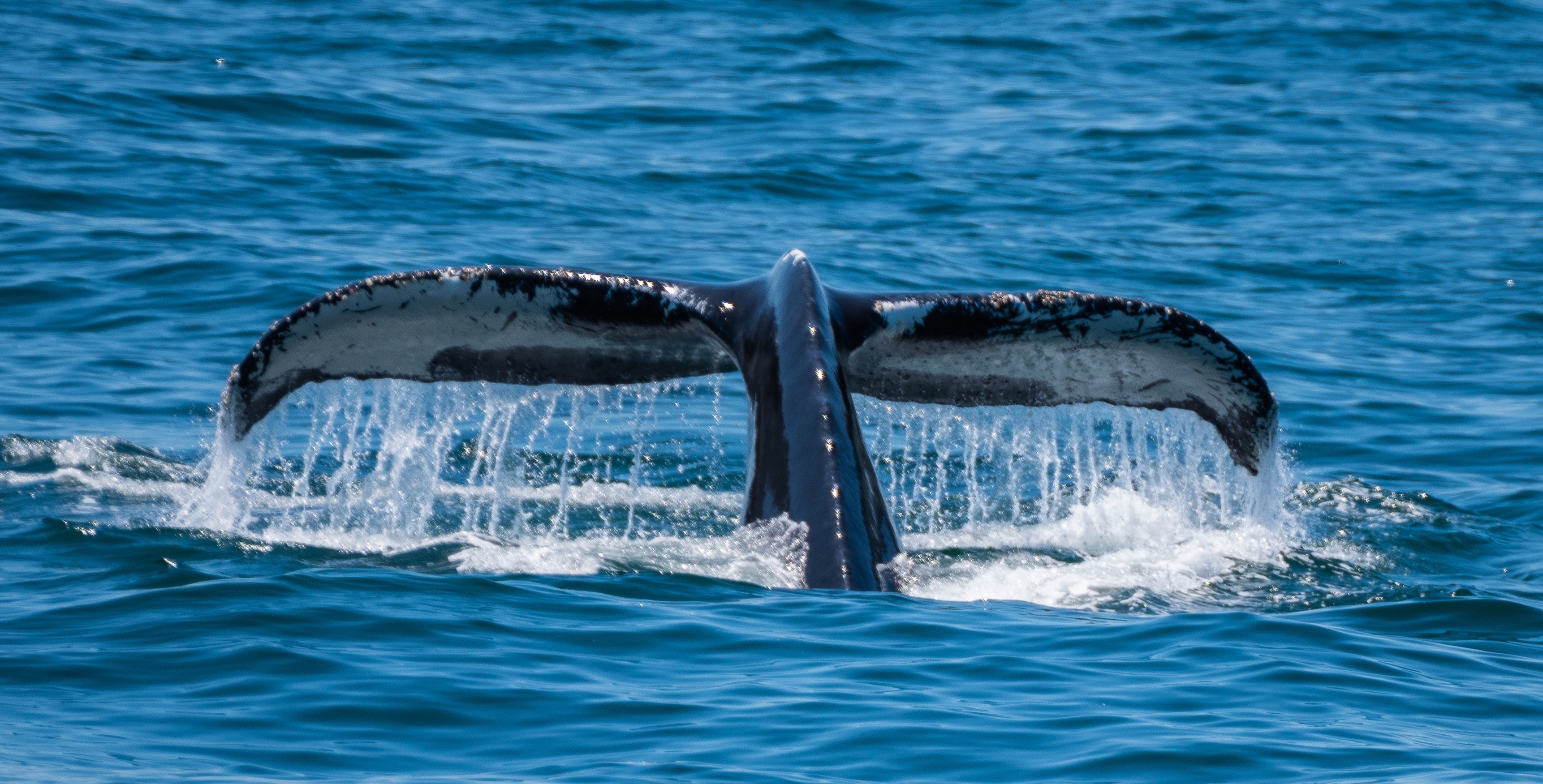
NOAA has finalized a new sanctuary management plan for Stellwagen Bank that defines key threats, but lacks sufficient protections for sanctuary resources.
Located off the coast of Massachusetts, Stellwagen Bank National Marine Sanctuary is one of our nation’s outstanding marine protected areas. The productive waters surrounding Stellwagen Bank support a rich variety of marine life and have made the area famous as a fishing ground. The sanctuary is also known for humpback and right whales that visit seasonally, and is renowned as one of the world's premier whale watching destinations. As with other national marine sanctuaries, Stellwagen Bank is managed by the National Oceanic and Atmospheric Administration (NOAA), the lead federal agency for managing the ocean.
Unfortunately, Stellwagen Bank is facing a variety of threats, from vessel traffic to pollution to fishing pressure to climate change. NOAA’s 2020 Condition Report for Stellwagen Bank identifies a number of concerning trends and notes that human activities continue to adversely impact wildlife, habitat and maritime heritage resources. Indeed, the ratings from the condition report show an alarmingly high incidence of resources in fair, fair/poor, or poor condition. This includes “poor” ratings for right whales and humpback whales, and a “fair” rating for habitat resources with the report finding that habitat loss or alteration has caused measurable harm to ecological integrity.
 In early 2020, NOAA initiated a process to update the management plan for Stellwagen Bank National Marine Sanctuary. Such management plan updates are conducted relatively infrequently, and thus are a critical opportunity to ensure that regulations will be sufficient to ensure lasting protection of sanctuary resources. In the case of Stellwagen Bank, this was the first update since 2010, with significant changes to sanctuary conditions having occurred over the past decade. During the public comment period held in 2022, Surfrider joined numerous other groups and individuals in calling for NOAA to strengthen protections for the sanctuary in response to the condition report findings (see Surfrider letter).
In early 2020, NOAA initiated a process to update the management plan for Stellwagen Bank National Marine Sanctuary. Such management plan updates are conducted relatively infrequently, and thus are a critical opportunity to ensure that regulations will be sufficient to ensure lasting protection of sanctuary resources. In the case of Stellwagen Bank, this was the first update since 2010, with significant changes to sanctuary conditions having occurred over the past decade. During the public comment period held in 2022, Surfrider joined numerous other groups and individuals in calling for NOAA to strengthen protections for the sanctuary in response to the condition report findings (see Surfrider letter).
This August, NOAA published the revised management plan for Stellwagen Bank after years of anticipation. The backbone of the new management plan is a set of 15 action plans which are intended to address current and emerging management needs. These cover a range of issues including marine mammals, seabirds, climate change, maritime heritage, education and outreach, scientific monitoring, water quality, vessel traffic, soundscape, ecosystem services, interagency coordination and other topics. Each of the action plans consists of a set of positive actions that NOAA and its partners can take to advance research, education and stewardship of these invaluable resources.
Yet, while Surfirder supports the inclusion of action plans in Stellwagen Bank’s revised management plan, they are not a substitute for strengthening regulations. This is particularly true when sanctuary resources are in poor condition or declining. Research, monitoring, and assessment are important components of sound management, but cannot alone conserve sanctuary resources. Increased protections are needed for Stellwagen’s sensitive habitats, species, ecological functions and sustainable human uses. Stellwagen Bank is one of the most important ecological areas in the Gulf of Maine, yet sanctuary regulations have not been updated since 1993, despite major increases in human uses and threats.
In light of the revised plan’s shortcomings, Surfrider urges NOAA and other agencies to pursue management strategies to address current and emergent threats. These approaches should include habitat protections, noise mitigation measures and vessel speed limits. Management actions must also address extractive and high-impact uses of the sanctuary, which are vital to ensuring ecosystem function and resiliency in the face of a warming ocean. NOAA should revise the current management plan to better reflect the threats to sanctuary resources. NOAA can facilitate stronger protections through proactive engagement with the New England Fishery Management Council, federal and state agencies, tribal nations, stakeholders, scientists and members of the public.
Surfrider Foundation is also working at the federal level to strengthen the National Marine Sanctuary program. The United States currently has 15 marine sanctuaries and two marine monuments that conserve more than 620,000 square miles of ocean and Great Lakes waters. Learn more here.
